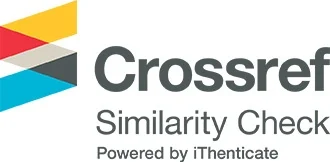Synthesis, Characterization and study of Antimicrobial and Antifungal Activities of some Novel Pyrimidine Derivatives
DOI:
https://doi.org/10.65137/lmj.v1i1.13Abstract
Background: The most widely practiced reaction of diazonium salts is diazocoupling especially with electron rich substrate such as s-alkylmercaptopyrimidines giving azo compounds of certain antimicrobial activity. Aim: Synthesis of pyrimidine derivatives bearing the aryl azo group and evaluation their antimicrobial activities. Material and method: Thiouracil (1) was methylated with CH3/I to afford 5-methyl thiouracil (2) which in turn was diazotized at position 5 via the reaction with diazonium salt of paminoacetophenone giving azo compound (3). This compound could be monobrominated to afford the bromo derivative (4) which is good starting material for the preparation of thiazole derivatives (5a-c) by its reaction with substituted thiosemicarbazones. Also, it could react with some aldehydes yielding chalcones (7a-c). This methyl ketone was also reacted with thiosemicarbazides giving thiosemicarbazone derivatives (8a-c) or reacted with semicarbazide giving semicarbazone (9) which in turn was reacted with SeO or SOCl2 yielding selene diazole or Thiadiazole (10) & (11) respectively. In addition, this methylketone (3) was a good substrate for the preparation of pyridines (12a-c) by its reation with some aldehydes in presence of ethyl acetoacetate and excess ammonium acetate. Finally, it could undergo Mannich reaction with some secondary amines, paraformaldehyde giving Mannich’s bases (13a-c). Results: The prepared compounds showed a variable activities as antimicrobial agents.Conclusion: Substitution of 2-thiouracil at the 5th position retains the antimicrobial activities.









